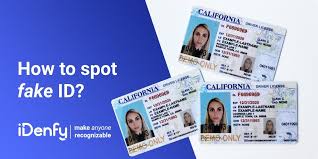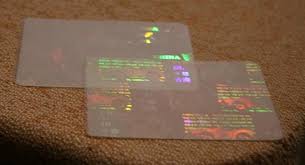fake ID purchase guide
1. Introduction
Understanding Fake IDs
A "fake ID" refers to an identification document that is either forged, altered, or completely fabricated to deceive authorities, organizations, or individuals into believing the holder of the ID is someone they are not. Fake IDs can range from simple fakes (which may only change a few details, like birth dates) to high-quality forgeries that closely resemble the official IDs issued by governments or institutions.
In today’s digital age, buying a fake ID online has become easier than ever before, with several websites offering fake IDs for various purposes. While the convenience and ease of purchasing these IDs may seem appealing, the practice comes with a significant set of risks—legal, financial, and social.
Why Do People Buy Fake IDs?
People purchase fake IDs for a wide range of reasons, but the most common motivations include:
- Underage Individuals: The majority of people who buy fake IDs are underage individuals looking to bypass age restrictions for alcohol, clubbing, or other adult activities.
- Travel and Immigration: Some people use fake IDs as a means to cross borders, secure employment, or for other identity purposes that require proof of age or residency.
- Privacy Concerns: In some cases, individuals may use fake IDs to protect their identity or shield themselves from identity theft.
Understanding why people buy fake IDs can help in assessing whether this is a practice that aligns with your personal or business interests.
Legal Implications and Risks
The act of buying, possessing, or using a fake ID is illegal in most countries, especially in Western nations such as the United States, the UK, Canada, and Australia. Individuals caught using a fake ID face legal penalties ranging from fines to imprisonment. For minors, in particular, using fake IDs to purchase alcohol or access restricted venues may lead to criminal charges, damaging their future prospects.
Even if you successfully acquire a fake ID, the risk of getting caught is always present, especially as technology advances and security features of real IDs become more sophisticated. Fake ID sellers and buyers alike can face severe consequences if caught in the act.
2. The Anatomy of a Fake ID
Materials and Quality
The materials used in the production of fake IDs play a crucial role in their success. Some fake IDs are simply printed on cheap plastic or cardstock, while others are made to resemble the real thing using advanced materials like polycarbonate or holographic overlays.
High-Quality Fake IDs: These are often crafted using similar materials to legitimate IDs. They might include features like:
- Laser engraving: Some fake IDs use laser engraving, which makes it harder to differentiate them from real IDs.
- Microtext: Tiny text or security features that are hard to replicate and can be used as a sign of authenticity.
- Holographic images and UV ink: These are used to mimic the security features found in government-issued IDs.
The higher the quality of the materials and craftsmanship, the more expensive the fake ID typically is. Buyers should understand the difference between a low-quality fake ID that is easy to spot and a high-quality one that closely resembles an authentic ID.
Security Features and Authenticity
Authentic identification documents contain a series of security features that prevent them from being easily copied or forged. Some of the common features include:
- Watermarks: Many IDs have watermarks embedded in the material to ensure they cannot be reproduced.
- UV Printing: Invisible ink that can only be seen under ultraviolet light is a hallmark of real IDs.
- Embossing and Microprinting: Fine print and raised features that are difficult to replicate with counterfeit technology.
When purchasing a fake ID, it's essential to know whether the product you're buying includes similar security features. Low-quality fakes are easier to detect and may not pass scrutiny under a blacklight or in close inspection.
Types of Fake IDs
Fake IDs come in various forms depending on the purpose of the buyer. The most common types include:
- Driver’s License: These are the most commonly sought-after fake IDs. They allow individuals to drive legally and can be used to gain access to restricted venues.
- State IDs: State-issued identification cards are an alternative to a driver’s license, and they are often used by individuals who are not yet old enough to drive.
- Passports: Fake passports are typically more expensive, but they are sought after by individuals who need to travel internationally or establish a new identity.
- Student IDs: These are often sought by undergraduates looking to access student discounts or to gain access to age-restricted venues.
3. How to Buy a Fake ID Safely
Choosing a Reliable Source
The first step to purchasing a fake ID is selecting a reliable seller. As with any online purchase, choosing a trustworthy seller is crucial to avoid scams, fraud, and low-quality products. Some sellers offer genuine high-quality fake IDs, while others may deliver subpar fakes or not deliver anything at all.
To identify a reliable fake ID provider, consider the following:
- Reputation: Research reviews, testimonials, and forum discussions to find out what previous customers have to say about the seller.
- Experience: A more established seller is often a safer bet, as they have a track record to uphold.
- Transparency: Legitimate fake ID sellers typically provide clear information about their products, prices, and delivery methods.
Payment Methods and Transactions
Most fake ID sellers accept payments via cryptocurrency, gift cards, or other anonymous methods to protect both the buyer and the seller. Traditional payment methods like credit cards or PayPal are generally avoided due to their ability to trace transactions back to the buyer. Cryptocurrency transactions, such as Bitcoin, offer more privacy and anonymity for those making purchases.
What to Look for in Fake ID Sellers
When evaluating a fake ID seller, there are a few red flags to watch out for:
- No reviews or testimonials: If the seller lacks social proof or customer feedback, it’s a major warning sign.
- Unclear product descriptions: Reliable sellers will always provide specific information about the quality, features, and security of their IDs.
- Excessive pricing: While high-quality fake IDs come at a premium, some sellers may charge excessively high prices for subpar products.
4. The Fake ID Market: An In-Depth Analysis
Growth of the Black Market for Fake IDs
The market for fake IDs has grown significantly in recent years, especially with the advent of online dark web marketplaces and social media platforms. On platforms like Telegram and Reddit, fake ID vendors openly advertise their services, making it easier than ever to connect with potential buyers.
The rise of e-commerce, peer-to-peer sales, and increased demand for fake identification has made the black market for IDs highly profitable. Despite efforts by law enforcement agencies to curb these activities, the market continues to thrive due to the anonymity of online transactions and the evolving technology of ID production.
Online vs. Offline Fake ID Sales
While offline, local counterfeiters still exist, online sellers dominate the fake ID market. Websites on the dark web are especially prevalent, where buyers and sellers can engage in transactions that are harder for authorities to trace. These dark web sites usually operate through encrypted communication and cryptocurrencies, further complicating efforts to track down offenders.
Regional Trends and Preferences
The demand for fake IDs varies by region and is influenced by the local laws and cultural practices of the area. For instance, underage drinking laws in countries like the United States and the UK have created a high demand for fake IDs, while in other countries, the demand may be driven by travelers looking to establish a false identity.
5. Target Audience and Demographics
Who Buys Fake IDs and Why?
The primary audience for fake IDs includes:
- Minors: Underage individuals seeking access to venues and services restricted to adults.
- Travelers and Immigrants: Those who may need a fake ID for residency purposes or to secure work.
- Privacy-focused Individuals: People concerned about privacy and security often use fake IDs to shield their real identity.
 fake ID purchase guide
fake ID purchase guide
 Fake ID Buying Guide
Fake ID Buying Guide
 benefits of fake ID
benefits of fake ID
 Indiana Fake ID
Indiana Fake ID
 Kansas Fake ID
Kansas Fake ID
 Maryland Fake ID
Maryland Fake ID
 Massachusetts Fake ID
Massachusetts Fake ID
 Realistic Arizona Fake ID
Realistic Arizona Fake ID
